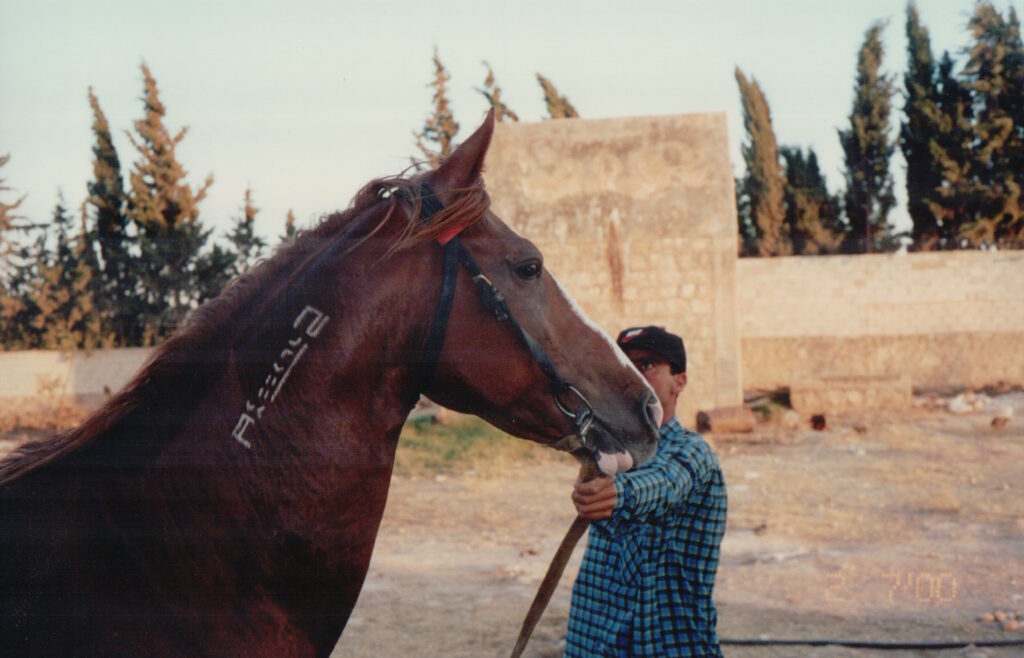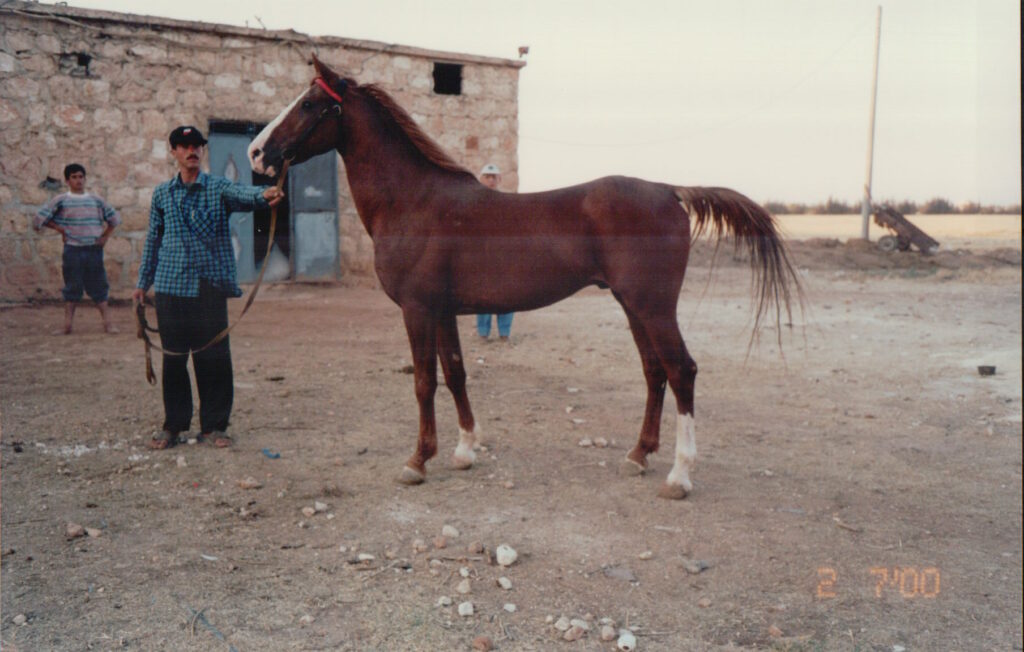Qayss, Kuhaylan Junaydi, Syria
I found the photos I was looking for, so I will stop scanning for the night. They don’t do justice to the effect this horse had on you. This is Qayss, by Mahrous out Zabbaa’, a stylish bay mare registered in the studbook as a Kuhaylat al-‘Ajuz, but actually from the prestigious branch of Kuhaylan Junaydi.
The authorities in Syria registered many horses from unfamiliar strains under the generic Kuhaylan ‘Ajuz, including horses of the Rishan Shar’abi, Mlayhan, Kuhaylan Junaydi, Kuhaylan al-‘Anz and Kuhalyan al-Sharif strains.
According to Abbas al-Azzawi’s masterful ‘Asha’ir al-Iraq (Volume 1, under the Shammar section), the war mare of Beneyeh Ibn Quraymis al-Jarba was a Kuhaylah Junaydiyyah. Beneyeh was killed in war in 1231 Hijri (1815 CE). He was the paternal cousin of Sfug al-Jarba, the Shaykh of the Shammar whom the Ottomans treacherously murdered in 1847.
Qayss’ eye was placed high, and his head was plain, but what charisma he had and what impression he made on you! What personality and what strength!



Wow!
What Kate said! I confess that I do like the plainer heads: they’re still unmistakably “Arabian” to me.
that makes two of us. The head and the overall expression are not supposed to be ‘cute’, nor inspire anything like “Awwwwwww”. It’s supposed to fascinate you, impress you, and draw you in.
https://www.allbreedpedigree.com/qayss will revert with registration number
I am afraid it has many errors. The iron grey Kuhaylan Wati sire of Mahrous was not the son of the Saqlawi Ibn Bisra of Diab Sbeih. He was bred by their in-laws al-Ghisham and was by another grey Kuhaylan al-Wati. The daughter of Hakim al-Ghishm was married to the son of Diab al-Sbeih, the Wati sire and his mother came to Diab al-Sbeih’s son as marital dot. Also, the great-grand dam of Mahrous was not by the Hamdani Simri of Saleh al-Dosh, he was not even born yet. Also the Saqlawi Jadran sire of the Marzaqani of Munees al-Saadi did not belong to Munis, but to Dray’i al-Ahdab. Also Adlah’s mother was not from Wuhayyid al-Hamad. Wuhayyid bought Adlah herself young from Awwad al-Sahlan of the Faddaghah.
So genetic studies are showing that the Syrian arabs have 12 of the 18 worldwide equine haplogroups and are the most diverse of all of the arabian groups studied. And that some of their haplogroups are likely very very old going back possibly to the Bronze age. Also they- meaning the studies are confirming the work of the Bowlings regarding strains and Marbatts.
best
Bruce Peek
Despite his slightly weak kidney attachment, it is really that one that I would use as a stallion because what we too often forget is that what matters is the quality of desert bred oriental blood rather than physic aspect.
i agree 100%.